特斯拉重要专利的部份译文——遗失的发明之自由能接收器
扒一扒特斯拉飞碟,世界上第一个人造反重力飞行器

扒一扒特斯拉飞碟,世界上第一个人造反重力飞行器或许你很诧异,为什么一个那么伟大的科学家会被从历史书中抹去,甚至找不到一点关于他的公开资料,但现在人类却在“堂而皇之”地用着他的发明?其中的原因,如果你仔细思考应该会容易想明白,神秘学君也不再多提了。
但无论怎样,特斯拉的确是一个远远领先于时代的伟人,他的无数发明就可以证明这一点,如果没有他,或许今天人类还没能用上智能手机、Wifi、蜂窝移动网络、微型计算机等等。
就像神秘学君之前一篇文章《扒一扒特斯拉信号,人类截获的第一条外星人信息》(详见附录1)中所提到,对于这些改变人类生活状态的发明,特斯拉其实不是那么“在意”的,所以他绝大多数的“基础发明”都没有申请专利,并“开源”给人类自由使用,毕竟他人生最大的追求还是在太阳系以外的世界。
诚如特斯拉所言:“我们的大脑只是一个接收器,在浩瀚的宇宙中,有一个核心不断给我们传输知识、力量和灵感。
虽然我还没有能力渗透到这个核心中,去破解它的秘密,但我非常肯定它绝对是存在的。
”神秘学君按:难道母体理论也是特斯拉最先提出的?(关于母体理论详见文末附录2)虽然特斯拉创造了今天的现代人类生活,但仍有一些他的发明在今天看来还是非常“科幻”甚至是无法理解的,比如特斯拉飞碟,也称特斯拉反重力飞行器(Tesla Antigravity vehicle)。
1928年,特斯拉注册了一个专利,专利号为1,655,144,内容是一个介于直升机和飞机之间的飞行器,而且在他去世之前,就已经完成了整套飞行器的设计蓝图,并称之为空间驱动器及反电磁场推进系统。
但可惜的是由于特斯拉所在的那个年代资源匮乏,所以他没能将这个设计变成现实;而直到1950年,美国政府在封存的特斯拉手稿中发现了这个设计,并随之启动了“1794工程”,试图将这个设计变成现实,虽然最终特斯拉飞碟被制造了出来,但由于耗费了太多的人力物力并仍是处于试验阶段,所以“1794工程”到1960年不得不终止,不过也有说法认为今天的美军反重力飞行器TR-3B依旧是在继续着特斯拉的愿景。
交流电发电机的勾勒起点,发明鬼才与他的大学生活——《被消失的科学神人?特斯拉亲笔自传》
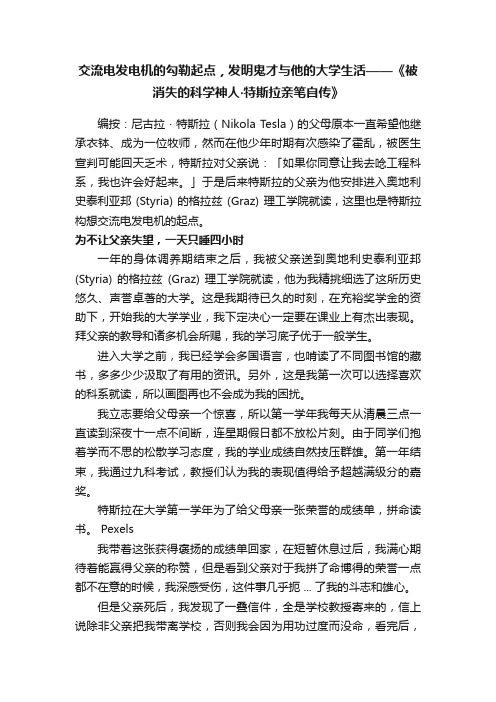
交流电发电机的勾勒起点,发明鬼才与他的大学生活——《被消失的科学神人‧特斯拉亲笔自传》编按:尼古拉・特斯拉(Nikola Tesla)的父母原本一直希望他继承衣钵、成为一位牧师,然而在他少年时期有次感染了霍乱,被医生宣判可能回天乏术,特斯拉对父亲说:「如果你同意让我去唸工程科系,我也许会好起来。
」于是后来特斯拉的父亲为他安排进入奥地利史泰利亚邦 (Styria) 的格拉兹 (Graz) 理工学院就读,这里也是特斯拉构想交流电发电机的起点。
为不让父亲失望,一天只睡四小时一年的身体调养期结束之后,我被父亲送到奥地利史泰利亚邦(Styria) 的格拉兹(Graz) 理工学院就读,他为我精挑细选了这所历史悠久、声誉卓著的大学。
这是我期待已久的时刻,在充裕奖学金的资助下,开始我的大学学业,我下定决心一定要在课业上有杰出表现。
拜父亲的教导和诸多机会所赐,我的学习底子优于一般学生。
进入大学之前,我已经学会多国语言,也啃读了不同图书馆的藏书,多多少少汲取了有用的资讯。
另外,这是我第一次可以选择喜欢的科系就读,所以画图再也不会成为我的困扰。
我立志要给父母亲一个惊喜,所以第一学年我每天从清晨三点一直读到深夜十一点不间断,连星期假日都不放松片刻。
由于同学们抱着学而不思的松散学习态度,我的学业成绩自然技压群雄。
第一年结束,我通过九科考试,教授们认为我的表现值得给予超越满级分的嘉奖。
特斯拉在大学第一学年为了给父母亲一张荣誉的成绩单,拼命读书。
Pexels我带着这张获得褒扬的成绩单回家,在短暂休息过后,我满心期待着能赢得父亲的称赞,但是看到父亲对于我拼了命博得的荣誉一点都不在意的时候,我深感受伤,这件事几乎扼 ... 了我的斗志和雄心。
但是父亲死后,我发现了一叠信件,全是学校教授寄来的,信上说除非父亲把我带离学校,否则我会因为用功过度而没命,看完后,我悲痛难抑。
大量阅读与讨论,发明构想与科学原理的加成此后,我全神贯注在物理学、力学和数学上,闲暇时间都泡在图书馆里。
GG_B
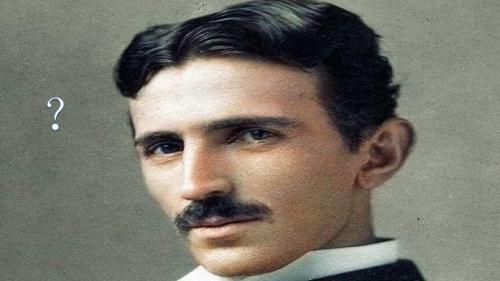
24岁的特斯拉 特斯拉的出场,全无天才的气质,甚至可以说,是一个失败者。 1882年,成为一家电话公司的工程师。特斯拉开始展现才华,设计出第一台感应电 机模型。 1884年,带着前雇主的推荐信,特斯拉第一次来到美国,见到了传说中的爱迪生。 爱迪生 托马斯· 爱迪生,对,就是发明灯泡的那位。看到推荐信,爱迪生当即决定聘用特斯 拉。 特斯拉被爱迪生创立的通用电气公司聘用 因为信上写的是,“我知道有两个伟大的人,一个是你,另一个就是这个年轻人。” 从简单的电器设计开始,到解决棘手的难题,特斯拉的天赋,爱迪生都感到惊讶。 特斯拉重新设计了直流电机,索取事先答应的5万美金报酬时,爱迪生却拒绝了他。 爱迪生:特斯拉,您并不懂得美国式的幽默。特斯拉:呵呵。 特斯拉要求,薪水从18美元涨到25美元,爱迪生还是拒绝了他。特斯拉:呵呵。 连25块都不给,特斯拉愤而离职。
尼古拉特斯拉经典语录
当天生的爱好发展成为一个强烈的愿望时,一个人会以惊人的速度向着他的目标大跨步地奔去。
多少人嘲讽我是个空想家,他们都是头脑最愚笨,目光最短浅的蠢才,还是让时间来说话吧!
在上帝面前,我们都一样聪明
我们的感官只能让我们感知外面世界很小的一部分
有人说,他预测出第一次、第二次世界大战; 有人说,他 预见了泰坦尼克号的沉没; 有人说,他制造了通古斯大爆 炸,威力是广岛核弹的1000倍; 有人说,他可以利用电磁, 穿越时空; 有人说,FBI将他的照片挂在机密大楼的头号 位置。
尼古拉· 特斯拉(Nikola Tesla,1856年7月10日 ~1943年1月7日),塞尔维亚裔美籍发明家、机 械工程师、电气工程师。他被认为是电力商业 化的重要推动者之一,并因主持设计了现代交 流电系统而最为人知。在迈克尔· 法拉第发现的 电磁场理论的基础上,特斯拉在电磁场领域有 着多项革命性的发明。他的多项相关专利以及 电磁学的理论研究工作是现代的无线通信和无 线电的基石。
中等磁论自由能(五),电磁线圈,自由能量,
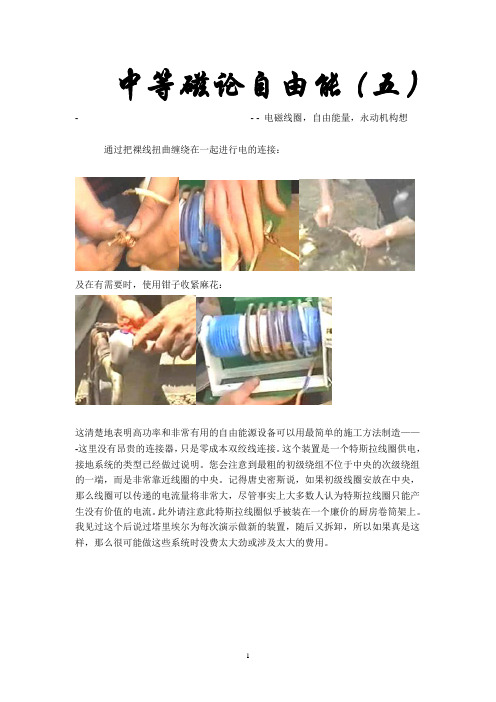
中等磁论自由能(五)- - - 电磁线圈,自由能量,永动机构想通过把裸线扭曲缠绕在一起进行电的连接:及在有需要时,使用钳子收紧麻花:这清楚地表明高功率和非常有用的自由能源设备可以用最简单的施工方法制造——-这里没有昂贵的连接器,只是零成本双绞线连接。
这个装置是一个特斯拉线圈供电,接地系统的类型已经做过说明。
您会注意到最粗的初级绕组不位于中央的次级绕组的一端,而是非常靠近线圈的中央。
记得唐史密斯说,如果初级线圈安放在中央,那么线圈可以传递的电流量将非常大,尽管事实上大多数人认为特斯拉线圈只能产生没有价值的电流。
此外请注意此特斯拉线圈似乎被装在一个廉价的厨房卷筒架上。
我见过这个后说过塔里埃尔为每次演示做新的装置,随后又拆卸,所以如果真是这样,那么很可能做这些系统时没费太大劲或涉及太大的费用。
这里显示的是主要的运行元件,放在一张小桌子上。
有一个铅酸电池(演示中稍后会被移除),它似乎是一个逆变器用来从电池产生电源交流电压,一个高压升压系统出于安全原因被封装在一个绿色的盒子里,一个特斯拉线圈,一个火花隙安在盒子上和一个风冷元件,或许还有一个固态振荡器系统驱动特斯拉线圈。
图中看不到,是一件装在小盒子里的物件,很可能是一个高压电容器。
安排了两个接地连接。
第一个是个埋在地下的旧的汽车散热器:而第二个是一条裸线缠绕在花园龙头的金属管子上并并拧紧,就象上面显示的那样。
绝对可能其电路是基于特斯拉的这个电路:也许,电池给逆变器供电使之产生电源电压,然后通过一个封闭的电子电路升压到一个高电压电平。
然后以此驱动特斯拉线圈,同时产生非常高的电压和电流并以电容器象水库一样储存能量。
火花隙接着脉冲这个能量,激励隔离变压器的初级绕组,产生了一个较低电压的巨大电流(视变压器本身处理电流的能力而定)供应给负载,这里是一行灯泡。
有很大可能那特斯拉线圈是安装在绿盒子里,而所见到的在外面的线圈是用重型线手绕的隔离变压器。
火花隙安装在一个附着在盒子边上的非导电的托架上,而其结构非常简单,把一铜棒插入一竖铜柱,铜棒上带有起子槽使得可以精确调节火花隙:负载是一行五个灯泡,悬挂在一把跨架在两张椅子背上的扫帚上:正如你所看到的,这个并没有高科技、高造价的构造,其后在这里所有的材料被用来做其它的东西。
无扇叶涡轮机及简要翻译
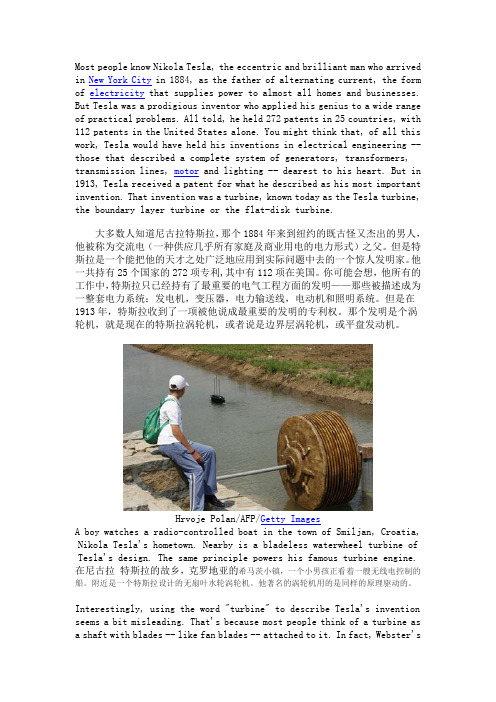
Most people know Nikola Tesla, the eccentric and brilliant man who arrived in New York City in 1884, as the father of alternating current, the form of electricity that supplies power to almost all homes and businesses. But Tesla was a prodigious inventor who applied his genius to a wide range of practical problems. All told, he held 272 patents in 25 countries, with 112 patents in the United States alone. You might think that, of all this work, Tesla would have held his inventions in electrical engineering -- those that described a complete system of generators, transformers, transmission lines, motor and lighting -- dearest to his heart. But in 1913, Tesla received a patent for what he described as his most important invention. That invention was a turbine, known today as the Tesla turbine, the boundary layer turbine or the flat-disk turbine.大多数人知道尼古拉特斯拉,那个1884年来到纽约的既古怪又杰出的男人,他被称为交流电(一种供应几乎所有家庭及商业用电的电力形式)之父。
BSEN61427-1-2013
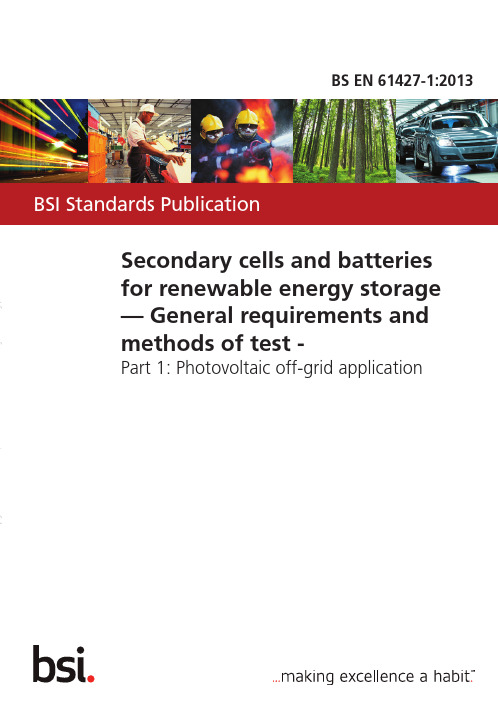
CENELEC
BS EN 61427-1:2013 EN 61427-1:2013
BS EN 61427-1:2013
National foreword
BRITISH STANDARD
This British Standard is the UK implementation of EN 61427-1:2013. It is identical to IEC 61427-1:2013. Together with BS EN 61427-2, it supersedes BS EN 61427:2005 which will be withdrawn upon publication of all parts of this series. The UK participation in its preparation was entrusted to Technical Committee PEL/21, Secondary cells and batteries. A list of organizations represented on this subcommittee can be obtained on request to its secretary. This publication does not purport to include all the necessary provisions of a contract. Users are responsible for its correct application. © The British Standards Institution 2014. Published by BSI Standards Limited 2014 ISBN 978 0 580 74813 4 ICS 27.160; 29.220.20
特斯拉电动汽车专利列表-文档
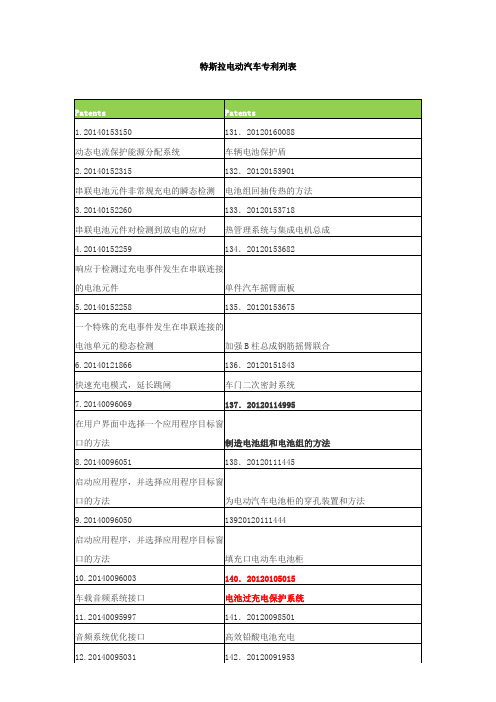
24.20130328531
154.20120040212
金属-空气电池作为环境氧浓度的功能的充电速率调制
减灾中的电池组使用金属-空气电池
25.20130327511
155.20120040210
被动空气流血,改进的冷却系统
金属-空气和非金属-空气电池组的热能量传输系统
172.20110262783
低温快速充电
电池有膨胀性材料的中心引脚组成
43.20130228431
173.20110254512
电气接口联锁系统
涓流充电器的高储能系统
44.20130221928
174.20110214808
电动车电池寿命优化操作模式
胶在模块化组件的选择性固化Biblioteka 45.20130221916
175.20110212356
电动车电池寿命优化操作模式
与电池冷却系统使用挤出和带肋导热界面
46.20130221742
176.20110206969
系统收获能源汽车以及制造和使用它们的方法
与电池冷却系统采用二次成型热界面
47.20130218741
177.20110198963
系统和方法,以电子起爆和执行证券借贷交易
26.20130325660
156.20120038314
根据汇总基于Web的内容的系统和方法RANKING实体
电动车延程型混合动力电池组系统
27.20130307491
157.20120037310
双向多相多模转换器包括升压和降压-升压模式
胶在模块化组件的选择性固化
28.20130307480
158.20120034501
DIN EN 10283

Previous editions DIN 17445: 1969-02, 1984-11 DIN EN 10283: 1998-12
Normen-Download-Beuth-Andritz AG-KdNr.144972-LfNr.4980066001-2010-07-15 11:39
2
EUROPEAN STANDARD NORME EUROPÉENNE EUROPÄISCHE NORM
Normen-Download-Beuth-Andritz AG-KdNr.144972-LfNr.4980066001-2010-07-15 11:39
EUROPEAN COMMITTEE FOR STANDARDIZATION COMITÉ EUROPÉEN DE NORMALISATION EUROPÄISCHES KOMITEE FÜR NORMUNG
English price group 11 www.din.de www.beuth.de
!$i-s"
06.10 1701080
DIN EN 10283:2010-06
A comma is used as the decimal marker.
National foreword
This standard has been prepared by Technical Committee ECISS/TC 111 “Steel castings and forgings” (Secretariat: AFNOR, France). The responsible German body involved in its preparation was the Normenausschuss Eisen und Stahl (Iron and Steel Standards Committee), Working Committee NA 021-00-11 AA Stahlguss.
自由能之天线系统
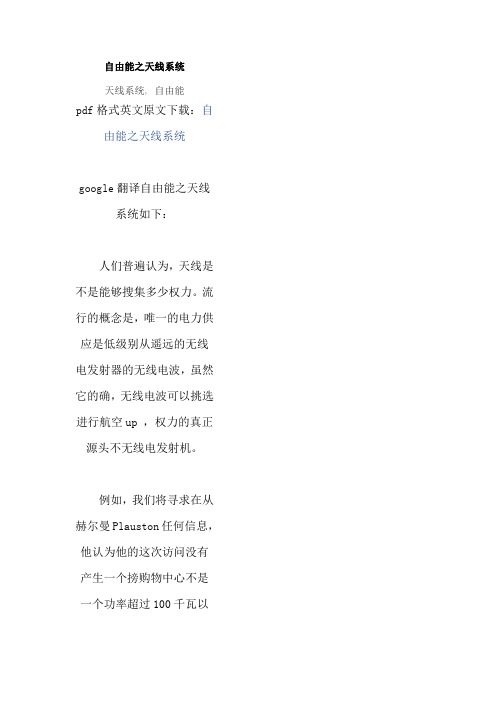
自由能之天线系统天线系统, 自由能pdf格式英文原文下载:自由能之天线系统google翻译自由能之天线系统如下:人们普遍认为,天线是不是能够搜集多少权力。
流行的概念是,唯一的电力供应是低级别从遥远的无线电发射器的无线电波,虽然它的确,无线电波可以挑选进行航空up ,权力的真正源头不无线电发射机。
例如,我们将寻求在从赫尔曼Plauston任何信息,他认为他的这次访问没有产生一个搒购物中心不是一个功率超过100千瓦以上,?系统天线系统。
托马斯亨利马里向观众展示了他的系统反复,在高达50千瓦的水平拉。
这些电源水平是不生产的电台信号。
尼古拉特斯拉抯系统。
尼古拉特斯拉产生了空中装置,值得一提。
这是5月21日申请专利1901年是主要的辐射能量的使用情况揂pparatus ?美国专利号码685957 。
该装置看似简单,但特斯拉指出,电容需要搊f 大量静电容量呢,他建议使用最优质的云母建造它作为1897年在他的专利号577671 。
该电路通过一个绝缘的绘制,有光泽的金属板的力量。
绝缘可喷涂在塑料。
盘越大,就越能回升。
越高板升高,更大的回升。
这种特斯拉抯系统拿起能源白天和黑夜。
电容得到被控和振动开关多次放电电容为降压变压器。
变压器降低电压,并提出了当前可用的输出功率,然后利用电力负荷。
看来,这可能主要是从器件的静电,一些人认为是零点能源领域的体现。
特斯拉抯设备操作时,很可能由马达驱动的威姆斯赫斯特机,而不是一个大的空中板喂食。
家建威姆斯赫斯特设备的详细资料在书中提供慔omemade闪电?由RA福特,书号0-07-021528-6 。
但是,应该认识到,特斯拉描述两种不同形式的能量回升。
首先是静电,拿起从非常轻微与零点能透过它流场接机板互动,和其他正在回升的动力辐射能活动,通常由雷击。
在一个偶然一瞥,一般人不会认为是一个可行的能源来源闪电,但事实并非如此,因为有大约200雷击每秒- 主要是在热带-与人们普遍不理解的是,他们辐射能事件及其影响即刻感受到作为传输地球上任何地方通过零点能在任何领域的瞬时距离。
特斯拉免费共享所有专利 原因何在
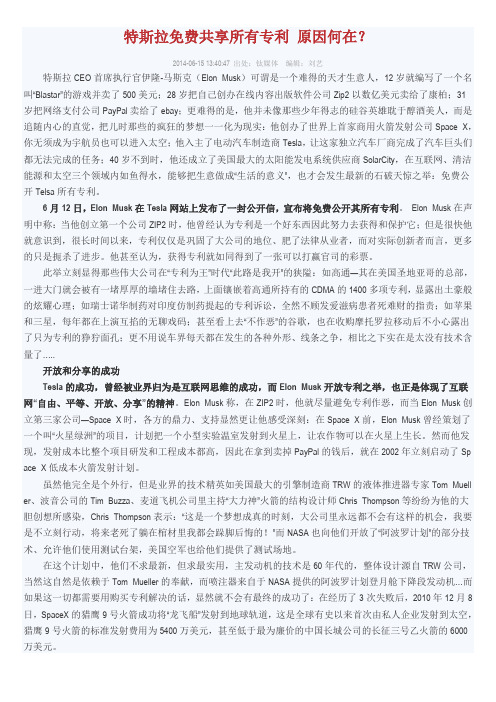
特斯拉免费共享所有专利原因何在?2014-06-15 13:40:47 出处:钛媒体编辑:刘艺特斯拉CEO首席执行官伊隆-马斯克(Elon Musk)可谓是一个难得的天才生意人,12岁就编写了一个名叫“Blastar”的游戏并卖了500美元;28岁把自己创办在线内容出版软件公司Zip2以数亿美元卖给了康柏;31岁把网络支付公司PayPal卖给了ebay;更难得的是,他并未像那些少年得志的硅谷英雄耽于醇酒美人,而是追随内心的直觉,把儿时那些的疯狂的梦想一一化为现实:他创办了世界上首家商用火箭发射公司Space X,你无须成为宇航员也可以进入太空;他入主了电动汽车制造商Tesla,让这家独立汽车厂商完成了汽车巨头们都无法完成的任务;40岁不到时,他还成立了美国最大的太阳能发电系统供应商SolarCity,在互联网、清洁能源和太空三个领域内如鱼得水,能够把生意做成“生活的意义”,也才会发生最新的石破天惊之举:免费公开Telsa所有专利。
6月12日,Elon Musk在Tesla网站上发布了一封公开信,宣布将免费公开其所有专利。
Elon Musk在声明中称:当他创立第一个公司ZIP2时,他曾经认为专利是一个好东西因此努力去获得和保护它;但是很快他就意识到,很长时间以来,专利仅仅是巩固了大公司的地位、肥了法律从业者,而对实际创新者而言,更多的只是扼杀了进步。
他甚至认为,获得专利就如同得到了一张可以打赢官司的彩票。
此举立刻显得那些伟大公司在“专利为王”时代“此路是我开”的狭隘:如高通—其在美国圣地亚哥的总部,一进大门就会被有一堵厚厚的墙堵住去路,上面镶嵌着高通所持有的CDMA的1400多项专利,显露出土豪般的炫耀心理;如瑞士诺华制药对印度仿制药提起的专利诉讼,全然不顾发爱滋病患者死难财的指责;如苹果和三星,每年都在上演互掐的无聊戏码;甚至看上去“不作恶”的谷歌,也在收购摩托罗拉移动后不小心露出了只为专利的狰狞面孔;更不用说车界每天都在发生的各种外形、线条之争,相比之下实在是太没有技术含量了…..开放和分享的成功Tesla的成功,曾经被业界归为是互联网思维的成功,而Elon Musk开放专利之举,也正是体现了互联网“自由、平等、开放、分享”的精神。
《特斯拉传——现代的发明者》拆书稿
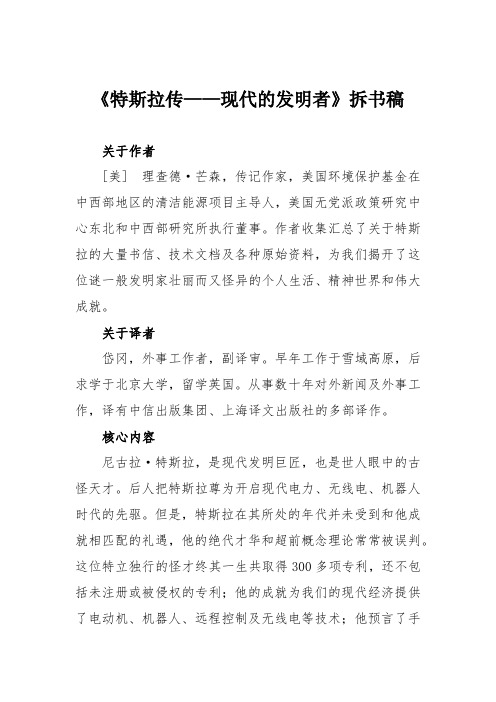
《特斯拉传——现代的发明者》拆书稿关于作者[美]理查德·芒森,传记作家,美国环境保护基金在中西部地区的清洁能源项目主导人,美国无党派政策研究中心东北和中西部研究所执行董事。
作者收集汇总了关于特斯拉的大量书信、技术文档及各种原始资料,为我们揭开了这位谜一般发明家壮丽而又怪异的个人生活、精神世界和伟大成就。
关于译者岱冈,外事工作者,副译审。
早年工作于雪域高原,后求学于北京大学,留学英国。
从事数十年对外新闻及外事工作,译有中信出版集团、上海译文出版社的多部译作。
核心内容尼古拉·特斯拉,是现代发明巨匠,也是世人眼中的古怪天才。
后人把特斯拉尊为开启现代电力、无线电、机器人时代的先驱。
但是,特斯拉在其所处的年代并未受到和他成就相匹配的礼遇,他的绝代才华和超前概念理论常常被误判。
这位特立独行的怪才终其一生共取得300多项专利,还不包括未注册或被侵权的专利;他的成就为我们的现代经济提供了电动机、机器人、远程控制及无线电等技术;他预言了手机、雷达、激光武器、人工智能、互联网、传真机等。
终生未婚的他才华横溢,除了专注发明以外,还会写诗歌,能够背诵整本书,精通8种语言。
特斯拉打赢了和爱迪生之间的“电流之战”,但去世时却身无分文,也许特斯拉本身就是一个又一个悖论,关于特斯拉的传奇一生,本书为我们揭开一个谜一样的科学奇才的客观经历。
前言大家好!我为大家解读的书是《特斯拉传——现代的发明者》。
关于特斯拉的传记有好多,包括特斯拉本人也写了自传。
尼古拉·特斯拉自己的写的自传相对比较枯燥,没有提及他和爱迪生的交集事件,总体不够全面。
本书作者理查德·芒森[美]是一位传记作家,收集汇总了关于特斯拉的大量书信、技术文档及各种原始资料,对特斯拉奇特的命运与遭遇进行了深入研究,并将其详尽而生动地予以揭示,让读者更全面、直观的了解这个知名度不高的发明家的伟大成就和精彩人生。
我想说,只要上过小学的人都应该知道爱迪生是伟大的发明家,小学课本里有关于爱迪生的伟大发明——白炽灯。
被世界遗忘的天才特斯拉回忆录
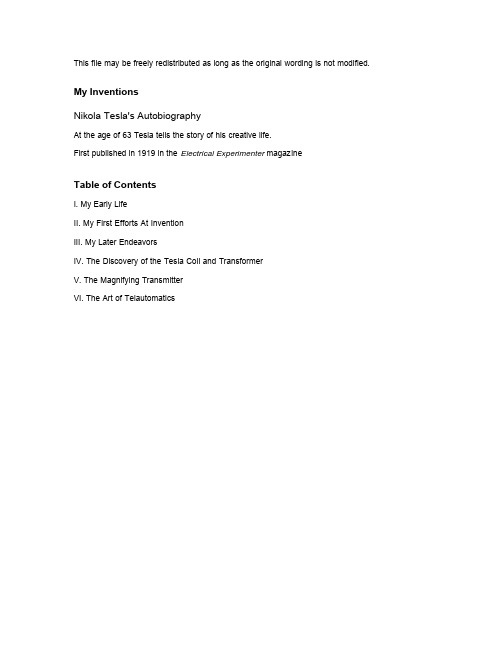
This file may be freely redistributed as long as the original wording is not modified. My InventionsNikola Tesla's AutobiographyAt the age of 63 Tesla tells the story of his creative life.First published in 1919 in the Electrical Experimenter magazineTable of ContentsI. My Early LifeII. My First Efforts At InventionIII. My Later EndeavorsIV. The Discovery of the Tesla Coil and TransformerV. The Magnifying TransmitterVI. The Art of TelautomaticsI. My Early LifeThe progressive development of man is vitally dependent on invention. It is the most important product of his creative brain. Its ultimate purpose is the complete mastery of mind over the material world, the harnessing of the forces of nature to human needs. This is the difficult task of the inventor who is often misunderstood and unrewarded. But he finds ample compensation in the pleasing exercises of his powers and in the knowledge of being one of that exceptionally privileged class without whom the race would have long ago perished in the bitter struggle against pitiless elements.Speaking for myself, I have already had more than my full measure of this exquisite enjoyment, so much that for many years my life was little short of continuous rapture. I am credited with being one of the hardest workers and perhaps I am, if thought is the equivalent of labor, for I have devoted to it almost all of my waking hours. But if work is interpreted to be a definite performance in a specified time according to a rigid rule, then I may be the worst of idlers. Every effort under compulsion demands a sacrifice of life-energy. I never paid such a price. On the contrary, I have thrived on my thoughts.In attempting to give a connected and faithful account of my activities in this series of articles which will be presented with the assistance of the Editors of the ELECTRICAL EXPERIMENTER and are chiefly addrest to our young men readers, I must dwell, however reluctantly, on the impressions of my youth and the circumstances and events which have been instrumental in determining my career.Our first endeavors are purely instinctive, promptings of an imagination vivid and undisciplined. As we grow older reason asserts itself and we become more and more systematic and designing. But those early impulses, tho not immediately productive, are of the greatest moment and may shape our very destinies. Indeed, I feel now that had I understood and cultivated instead of suppressing them, I would have added substantial value to my bequest to the world. But not until I had attained manhood did I realize that I was an inventor.This was due to a number of causes. In the first place I had a brother who was gifted to an extraordinary degree—one of those rare phenomena of mentality which biological investigation has failed to explain. His premature death left my parents disconsolate. We owned a horse which had been presented to us by a dear friend. It was a magnificent animal of Arabian breed, possest of almost human intelligence, and was cared for and petted by the whole family, having on one occasion saved my father's life under remarkable circumstances. My father had been called one winter night to perform an urgent duty and while crossing the mountains, infested by wolves, the horse became frightened and ran away, throwing him violently to the ground. It arrived home bleeding and exhausted, but after the alarm was sounded immediately dashed off again, returning to the spot, and before the searching party were far on the way they were met by my father, who had recovered consciousness and remounted, not realizing that he had been lying in the snow for several hours. This horse was responsible for my brother's injuries from which he died. I witnest the tragic scene and altho fifty-six years have elapsed since, my visual impression of it has lost none of its force. The recollection of his attainments made every effort of mine seem dull in comparison.Anything I did that was creditable merely caused my parents to feel their loss more keenly. So I grew up with little confidence in myself. But I was far from being considered a stupid boy, if I am to judge from an incident of which I have still a strong remembrance. One day the Aldermenwere passing thru a street where I was at play with other boys. The oldest of these venerable gentlemen—a wealthy citizen—paused to give a silver piece to each of us. Coming to me he suddenly stopt and commanded, "Look in my eyes." I met his gaze, my hand outstretched to receive the much valued coin, when, to my dismay, he said, "No, not much, you can get nothing from me, you are too smart." They used to tell a funny story about me. I had two old aunts withwrinkled faces, one of them having two teeth protruding like the tusks of an elephant which she buried in my cheek every time she kist me. Nothing would scare me more than the prospect of being hugged by these as affectionate as unattractive relatives. It happened that while being carried in my mother's arms they asked me who was the prettier of the two. After examining their faces intently, I answered thoughtfully, pointing to one of them, "This here is not as ugly as the other."Then again, I was intended from my very birth for the clerical profession and this thought constantly opprest me. I longed to be an engineer but my father was inflexible. He was the son of an officer who served in the army of the Great Napoleon and, in common with his brother, professor of mathematics in a prominent institution, had received a military education but, singularly enough, later embraced the clergy in which vocation he achieved eminence. He was a very erudite man, a veritable natural philosopher, poet and writer and his sermons were said to be as eloquent as those of Abraham a Sancta-Clara. He had a prodigious memory and frequently recited at length from works in several languages. He often remarked playfully that if some of the classics were lost he could restore them. His style of writing was much admired. He penned sentences short and terse and was full of wit and satire. The humorous remarks he made were always peculiar and characteristic. Just to illustrate, I may mention one or two instances. Among the help there was a cross-eyed man called Mane, employed to do work around the farm. He was chopping wood one day. As he swung the axe my father, who stood nearby and felt very uncomfortable, cautioned him, "For God's sake, Mane, do not strike at what you are looking but at what you intend to hit." On another occasion he was taking out for a drive a friend who carelessly permitted his costly fur coat to rub on the carriage wheel. My father reminded him of it saying, "Pull in your coat, you are ruining my tire." He had the odd habit of talking to himself and would often carry on an animated conversation and indulge in heated argument, changing the tone of his voice. A casual listener might have sworn that several people were in the room.Altho I must trace to my mother's influence whatever inventiveness I possess, the training he gave me must have been helpful. It comprised all sorts of exercises—as, guessing one another's thoughts, discovering the defects of some form or expression, repeating long sentences or performing mental calculations. These daily lessons were intended to strengthen memory and reason and especially to develop the critical sense, and were undoubtedly very beneficial.My mother descended from one of the oldest families in the country and a line of inventors. Both her father and grandfather originated numerous implements for household, agricultural and other uses. She was a truly great woman, of rare skill, courage and fortitude, who had braved the storms of life and past thru many a trying experience. When she was sixteen a virulent pestilence swept the country. Her father was called away to administer the last sacraments to the dying and during his absence she went alone to the assistance of a neighboring family who were stricken by the dread disease. All of the members, five in number, succumbed in rapid succession. She bathed, clothed and laid out the bodies, decorating them with flowers according to the custom of the country and when her father returned he found everything ready for a Christian burial. My mother was an inventor of the first order and would, I believe, have achieved great things had she not been so remote from modern life and its multifold opportunities. She invented and constructed all kinds of tools and devices and wove the finest designs from thread which was spun by her. She even planted the seeds, raised the plants and separated the fibers herself. She worked indefatigably, from break of day till late at night, and most of the wearing apparel and furnishings of the home was the product of her hands. When she was past sixty, her fingers were still nimble enough to tie three knots in an eyelash.There was another and still more important reason for my late awakening. In my boyhood I suffered from a peculiar affliction due to the appearance of images, often accompanied by strong flashes of light, which marred the sight of real objects and interfered with my thought and action. They were pictures of things and scenes which I had really seen, never of those I imagined. When a word was spoken to me the image of the object it designated would present itself vividlyto my vision and sometimes I was quite unable to distinguish whether what I saw was tangible or not. This caused me great discomfort and anxiety. None of the students of psychology or physiology whom I have consulted could ever explain satisfactorily these phenomena. They seem to have been unique altho I was probably predisposed as I know that my brother experienced a similar trouble. The theory I have formulated is that the images were the result of a reflex action from the brain on the retina under great excitation. They certainly were not hallucinations such as are produced in diseased and anguished minds, for in other respects I was normal and composed. To give an idea of my distress, suppose that I had witnest a funeral or some such nerve-racking spectacle. Then, inevitably, in the stillness of night, a vivid picture of the scene would thrust itself before my eyes and persist despite all my efforts to banish it. Sometimes it would even remain fixt in space tho I pushed my hand thru it. If my explanation is correct, it should be able to project on a screen the image of any object one conceives and make it visible. Such an advance would revolutionize all human relations. I am convinced that this wonder can and will be accomplished in time to come; I may add that I have devoted much thought to the solution of the problem.To free myself of these tormenting appearances, I tried to concentrate my mind on something else I had seen, and in this way I would of ten obtain temporary relief; but in order to get it I had to conjure continuously new images. It was not long before I found that I had exhausted all of those at my command; my "reel" had run out, as it were, because I had seen little of the world—only objects in my home and the immediate surroundings. As I performed these mental operations for the second or third time, in order to chase the appearances from my vision, the remedy gradually lost all its force. Then I instinctively commenced to make excursions beyond the limits of the small world of which I had knowledge, and I saw new scenes. These were at first very blurred and indistinct, and would flit away when I tried to concentrate my attention upon them, but by and by I succeeded in fixing them; they gained in strength and distinctness and finally assumed the concreteness of real things. I soon discovered that my best comfort was attained if I simply went on in my vision farther and farther, getting new impressions all the time, and so I began to travel—of course, in my mind. Every night (and sometimes during the day), when alone, I would start on my journeys—see new places, cities and countries—live there, meet people and make friendships and acquaintances and, however unbelievable, it is a fact that they were just as dear to me as those in actual life and not a bit less intense in their manifestations.This I did constantly until I was about seventeen when my thoughts turned seriously to invention. Then I observed to my delight that I could visualize with the greatest facility. I needed no models, drawings or experiments. I could picture them all as real in my mind. Thus I have been led unconsciously to evolve what I consider a new method of materializing inventive concepts and ideas, which is radically opposite to the purely experimental and is in my opinion ever so much more expeditious and efficient. The moment one constructs a device to carry into practise a crude idea he finds himself unavoidably engrost with the details and defects of the apparatus. As he goes on improving and reconstructing, his force of concentration diminishes and he loses sight of the great underlying principle. Results may be obtained but always at the sacrifice of quality. My method is different. I do not rush into actual work. When I get an idea I start at once building it up in my imagination. I change the construction, make improvements and operate the device in my mind. It is absolutely immaterial to me whether I run my turbine in thought or test it in my shop. I even note if it is out of balance. There is no difference whatever, the results are the same. In this way I am able to rapidly develop and perfect a conception without touching anything. When I have gone so far as to embody in the invention every possible improvement I can think of and see no fault anywhere, I put into concrete form this final product of my brain. Invariably my device works as I conceived that it should, and the experiment comes out exactly as I planned it. In twenty years there has not been a single exception. Why should it be otherwise? Engineering, electrical and mechanical, is positive in results. There is scarcely a subject that cannot be mathematically treated and the effects calculated or the results determined beforehand from the available theoretical and practical data. The carrying out into practise of a crude idea as is being generally done is, I hold, nothing but a waste of energy, money and time.My early affliction had, however, another compensation. The incessant mental exertion developed my powers of observation and enabled me to discover a truth of great importance. I had noted that the appearance of images was always preceded by actual vision of scenes under peculiar and generally very exceptional conditions and I was impelled on each occasion to locate the original impulse. After a while this effort grew to be almost automatic and I gained great facility in connecting cause and effect. Soon I became aware, to my surprise, that every thought I conceived was suggested by an external impression. Not only this but all my actions were prompted in a similar way. In the course of time it became perfectly evident to me that I was merely an automaton endowed with power of movement, responding to the stimuli of the sense organs and thinking and acting accordingly. The practical result of this was the art of telautomatics which has been so far carried out only in an imperfect manner. Its latent possibilities will, however, be eventually shown. I have been since years planning self-controlled automata and believe that mechanisms can be produced which will act as if possest of reason, to a limited degree, and will create a revolution in many commercial and industrial departments.I was about twelve years old when I first succeeded in banishing an image from my vision by wilful effort, but I never had any control over the flashes of light to which I have referred. They were, perhaps, my strangest experience and inexplicable. They usually occurred when I found myself in a dangerous or distressing situation, or when I was greatly exhilarated. In some instances I have seen all the air around me filled with tongues of living flame. Their intensity, instead of diminishing, increased with time and seemingly attained a maximum when I was about twenty-five years old. While in Paris, in 1883, a prominent French manufacturer sent me an invitation to a shooting expedition which I accepted. I had been long confined to the factory and the fresh air had a wonderfully invigorating effect on me. On my return to the city that night I felt a positive sensation that my brain had caught fire. I saw a light as tho a small sun was located in it and I past the whole night applying cold compressions to my tortured head. Finally the flashes diminished in frequency and force but it took more than three weeks before they wholly subsided. When a second invitation was extended to me my answer was an emphatic NO!These luminous phenomena still manifest themselves from time to time, as when a new idea opening up possibilities strikes me, but they are no longer exciting, being of relatively small intensity. When I close my eyes I invariably observe first, a background of very dark and uniform blue, not unlike the sky on a clear but starless night. In a few seconds this field becomes animated with innumerable scintillating flakes of green, arranged in several layers and advancing towards me. Then there appears, to the right, a beautiful pattern of two systems of parallel and closely spaced lines, at right angles to one another, in all sorts of colors with yellow-green and gold predominating. Immediately thereafter the lines grow brighter and the whole is thickly sprinkled with dots of twinkling light. This picture moves slowly across the field of vision and in about ten seconds vanishes to the left, leaving behind a ground of rather unpleasant and inert grey which quickly gives way to a billowy sea of clouds, seemingly trying to mould themselves in living shapes. It is curious that I cannot project a form into this grey until the second phase is reached. Every time, before falling asleep, images of persons or objects flit before my view. When I see them I know that I am about to lose consciousness. If they are absent and refuse to come it means a sleepless night.To what an extent imagination played a part in my early life I may illustrate by another odd experience. Like most children I was fond of jumping and developed an intense desire to support myself in the air. Occasionally a strong wind richly charged with oxygen blew from the mountains rendering my body as light as cork and then I would leap and float in space for a long time. It was a delightful sensation and my disappointment was keen when later I undeceived myself.During that period I contracted many strange likes, dislikes and habits, some of which I can trace to external impressions while others are unaccountable. I had a violent aversion against the earrings of women but other ornaments, as bracelets, pleased me more or less according to design. The sight of a pearl would almost give me a fit but I was fascinated with the glitter ofcrystals or objects with sharp edges and plane surfaces. I would not touch the hair of other people except, perhaps, at the point of a revolver. I would get a fever by looking at a peach and if a piece of camphor was anywhere in the house it caused me the keenest discomfort. Even now I am not insensible to some of these upsetting impulses. When I drop little squares of paper in a dish filled with liquid, I always sense a peculiar and awful taste in my mouth. I counted the steps in my walks and calculated the cubical contents of soup plates, coffee cups and pieces of food—otherwise my meal was unenjoyable. All repeated acts or operations I performed had to be divisible by three and if I mist I felt impelled to do it all over again, even if it took hours.Up to the age of eight years, my character was weak and vacillating. I had neither courage or strength to form a firm resolve. My feelings came in waves and surges and vibrated unceasingly between extremes. My wishes were of consuming force and like the heads of the hydra, they multiplied. I was opprest by thoughts of pain in life and death and religious fear. I was swayed by superstitious belief and lived in constant dread of the spirit of evil, of ghosts and ogres and other unholy monsters of the dark. Then, all at once, there came a tremendous change which altered the course of my whole existence. Of all things I liked books the best. My father had a large library and whenever I could manage I tried to satisfy my passion for reading. He did not permit it and would fly into a rage when he caught me in the act. He hid the candles when he found that I was reading in secret. He did not want me to spoil my eyes. But I obtained tallow, made the wicking and cast the sticks into tin forms, and every night I would bush the keyhole and the cracks and read, often till dawn, when all others slept and my mother started on her arduous daily task. On one occasion I came across a novel entitled "Abafi" (the Son of Aba), a Serbian translation of a well known Hungarian writer, Josika. This work somehow awakened my dormant powers of will and I began to practise self-control. At first my resolutions faded like snow in April, but in a little while I conquered my weakness and felt a pleasure I never knew before—that of doing as I willed. In the course of time this vigorous mental exercise became second nature. At the outset my wishes had to be subdued but gradually desire and will grew to be identical. After years of such discipline I gained so complete a mastery over myself that I toyed with passions which have meant destruction to some of the strongest men. At a certain age I contracted a mania for gambling which greatly worried my parents. To sit down to a game of cards was for me the quintessence of pleasure. My father led an exemplary life and could not excuse the senseless waste of time and money in which I indulged. I had a strong resolve but my philosophy was bad. I would say to him, "I can stop whenever I please but is it worth while to give up that which I would purchase with the joys of Paradise?" On frequent occasions he gave vent to his anger and contempt but my mother was different. She understood the character of men and knew that one's salvation could only be brought about thru his own efforts. One afternoon, I remember, when I had lost all my money and was craving for a game, she came to me with a roll of bills and said, "Go and enjoy yourself. The sooner you lose all we possess the better it will be.I know that you will get over it." She was right. I conquered my passion then and there and only regretted that it had not been a hundred times as strong. I not only vanquished but tore it from my heart so as not to leave even a trace of desire. Ever since that time I have been as indifferent to any form of gambling as to picking teeth.During another period I smoked excessively, threatening to ruin my health. Then my will asserted itself and I not only stopt but destroyed all inclination. Long ago I suffered from heart trouble until I discovered that it was due to the innocent cup of coffee I consumed every morning. I discontinued at once, tho I confess it was not an easy task. In this way I checked and bridled other habits and passions and have not only preserved my life but derived an immense amount of satisfaction from what most men would consider privation and sacrifice.After finishing the studies at the Polytechnic Institute and University I had a complete nervous breakdown and while the malady lasted I observed many phenomena strange and unbelievable.II. My First Efforts At InventionI shall dwell briefly on these extraordinary experiences, on account of their p ossible interest to students of psychology and physiology and also because this period of agony was of the greatest consequence on my mental development and subsequent labors. But it is indispensable to first relate the circumstances and conditions which preceded them and in which might be found their partial explanation.From childhood I was compelled to concentrate attention upon myself. This caused me much suffering but, to my present view, it was a blessing in disguise for it has taught me to appreciate the inestimable value of introspection in the preservation of life, as well as a means of achievement. The pressure of occupation and the incessant stream of impressions pouring into our consciousness thru all the gateways of knowledge make modern existence hazardous in many ways. Most persons are so absorbed in the contemplation of the outside world that they are wholly oblivious to what is passing on within themselves.The premature death of millions is primarily traceable to this cause. Even among those who exercise care it is a common mistake to avoid imaginary, and ignore the real dangers. And what is true of an individual also applies, more or less, to a people as a whole. Witness, in illustration, the prohibition movement. A drastic, if not unconstitutional, measure is now being put thru in this country to prevent the consumption of alcohol and yet it is a positive fact that coffee, tea, tobacco, chewing gum and other stimulants, which are freely indulged in even at the tender age, are v astly more injurious to the national body, judging from the number of those who succumb. So, for instance, during my student years I gathered from the published necrologues in Vienna, the home of coffee drinkers, that deaths from heart trouble sometimes reached sixty-seven per cent of the total. Similar observations might probably be made in cities where the consumption of tea is excessive. These delicious beverages superexcite and gradually exhaust the fine fibers of the brain. They also interfere seriously with arterial circulation and should be enjoyed all the more sparingly as their deleterious effects are slow and imperceptible. Tobacco, on the other hand, is conducive to easy and pleasant thinking and detracts from the intensity and concentration necessary to all original and vigorous effort of the intellect. Chewing gum is helpful for a short while but soon drains the glandular system and inflicts irreparable damage, not to speak of the revulsion it creates. Alcohol in small quantities is an excellent tonic, but is toxic in its action when absorbed in larger amounts, quite immaterial as to whether it is taken in as whiskey or produced in the stomach from sugar. But it should not be overlooked that all these are great eliminators assisting Nature, as they do, in upholding her stern but just law of the survival of the fittest. Eager reformers should also be mindful of the eternal perversity of mankind which makes the indifferent "laissez-faire" by far preferable to enforced restraint.The truth about this is that we need stimulants to do our best work under present living conditions, and that we must exercise moderation and control our appetites and inclinations in every direction. That is what I have been doing for many years, in this way maintaining myself young in body and mind. Abstinence was not always to my liking but I find ample reward in the agreeable experiences I am now making. Just in the hope of converting some to my precepts and convictions I will recall one or two.A short time ago I was returning to my hotel. It was a bitter cold night, the ground slippery, and no taxi to be had. Half a block behind me followed another man, evidently as anxious as myself to get under cover. Suddenly my legs went up in the air. In the same instant there was a flash in my brain, the nerves responded, the muscles contracted, I swung thru 180 degrees and landed on my hands. I resumed my walk as tho nothing had happened when the stranger caught up with me. "How old are you?" he asked, surveying me critically. "Oh, about fifty-nine," I replied. "What of it?" "Well," said he, "I have seen a cat do this but never a man." About a month since I wanted to order new eyeglasses and went to an oculist who put me thru the usual tests. He lookt at me incredulously as I read off with ease the smallest print at considerable distance. But when I told。
爱因斯坦的相对论包括失误,评论特斯拉
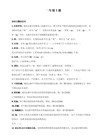
Physics Science honor him giving a unit, the Tesla.物理科学的荣誉给他一个单位,特斯拉。
... ... To give you an idea some call him, The Man who ry为了给你一个想法有些打电话给他, 谁发明的世纪人二十
Do you know who was Nikola Tesla?你知道谁是尼古拉特斯拉?
... ... He was the man that basically give any gadget and energy we use today from moving electricity to rivers to your home ...他是男人,基本上给予任何小工具,我们使用的能源电力河流从移动到您家今天... so the Electric company may charge you, up to cellular phones.因此,电器公司可能会收取你,直到手机。
In the 1980s he was proved to be right.在20世纪80年代,他被证明是正确的。 A study of energy loss in a double neutron star pulsar called PSR 1913 + 16 proved that gravity waves exist.一个在双中子星脉冲星能量损失的研究所谓的PSR 1913 +16证明了引力波的存在。 Tesla's idea that gravity is a field effect is now taken more seriously than Einstein took it.特斯拉的想法,重力场的影响是更严重的是现在采取比爱因斯坦抓住了它。 Unfortunately, Tesla never revealed what had led him to this conclusion.不幸的是,特斯拉从未透露了什么使他得出这一结论。 He never explained his theory of gravitation to the world.他没有解释他的万有引力理论走向世界。 The attack he made on Einstein's work was considered outrageous by the scientific establishment of the time, and only now do we have enough understanding of gravity to realize that he was right.他的攻击爱因斯坦的工作取得了被认为大逆不道科研机构的时间,只有现在,我们有足够的重力了解认识到,他是对的。
“还原”真实的特斯拉
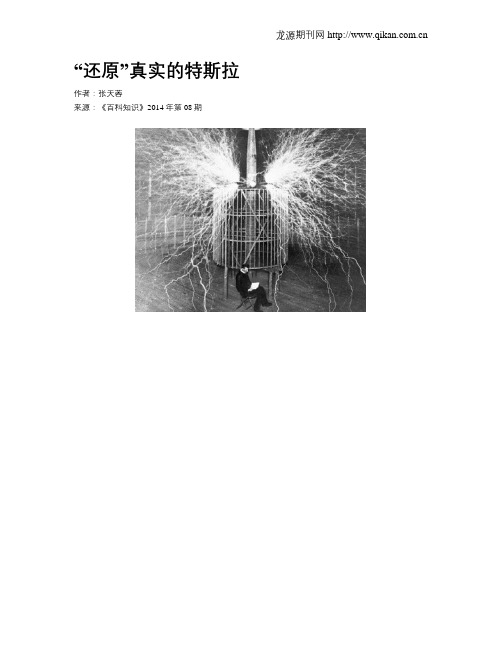
“还原”真实的特斯拉作者:张天蓉来源:《百科知识》2014年第08期提到“特斯拉”你会想到什么?是即将在中国上市的美国电动汽车品牌,还是物理教材中的磁感应强度单位?无论是汽车还是物理学名词,“特斯拉”的大名其实都源于一个真实的人——美籍塞尔维亚电气工程师、与爱迪生齐名的发明家尼古拉·特斯拉(Nikola Tesla,1856~1943)。
特斯拉坎坷的一生颇具传奇性,近几年在一些文艺作品的渲染下,他的人生又多了许多神秘色彩。
有人把他描述成一个具有特异功能的超人,有人怀疑他是来自外星球的高等生物,还有人认为地球上发生的许多神秘事件都与他的研究有关。
特斯拉的发明创造及研究范围大多与电气、电子、光、无线电等有关,看不见摸不着的“电”让特斯拉的真实面目更加模糊,笔者便忍不住要脱去其神秘外衣,还其真实的人生!为电而生有人会说,如果没有爱迪生,也许人类还只能用烛光照亮黑夜。
但也有人会说,如果没有爱迪生,还有特斯拉呢!特斯拉才是上帝派给人类的普罗米修斯、电气电子之神!历史没有“如果”。
在无线电通信和电力系统发展的过程中,我们既有爱迪生,又有特斯拉,上帝给人类派来了两位伟大的发明家。
在爱迪生9岁的那一年,尼古拉·特斯拉伴随着一道闪电来到了人间。
3岁时,特斯拉用手抚摸他的宠物猫,突然看到一道细微闪光穿过手掌,随即带来一阵奇怪的麻痹感。
父亲告诉惊魂未定却又不停地问“为什么?”的儿子,“那是电,和天空打雷时一样的电!”小特斯拉心里想:“和打雷闪电一样?难道天地宇宙是一只大猫吗?如果是一只大猫,又是谁在抚摸它呢?是上帝吗?”太多的疑问纠缠着这个不停思考的孩子。
从此,“电”这个名词,深深地刻在了特斯拉的脑海中。
孩童和少年时代的特斯拉经常出现幻觉,眼中总是看到火花电光闪烁一片。
父亲希望特斯拉将来做牧师,特斯拉却暗暗立志,要毕生研究电。
后来特斯拉染上了霍乱,这一场大病动摇了父亲的信念,成就了儿子的梦想,从此,特斯拉与电结下不解之缘。
CH4失落的发明之放大传输器1
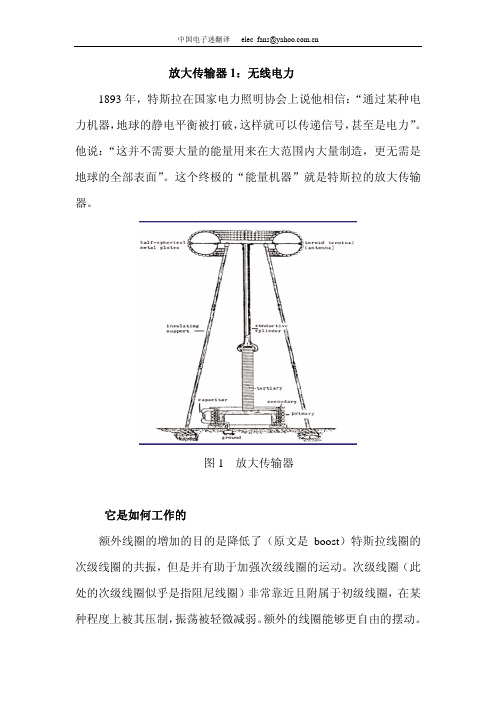
放大传输器1:无线电力1893年,特斯拉在国家电力照明协会上说他相信:“通过某种电力机器,地球的静电平衡被打破,这样就可以传递信号,甚至是电力”。
他说:“这并不需要大量的能量用来在大范围内大量制造,更无需是地球的全部表面”。
这个终极的“能量机器”就是特斯拉的放大传输器。
图1 放大传输器它是如何工作的额外线圈的增加的目的是降低了(原文是boost)特斯拉线圈的次级线圈的共振,但是并有助于加强次级线圈的运动。
次级线圈(此处的次级线圈似乎是指阻尼线圈)非常靠近且附属于初级线圈,在某种程度上被其压制,振荡被轻微减弱。
额外的线圈能够更自由的摆动。
“额外的线圈”,特斯拉写道,“实际上可以获得你想得到的任何电势,几乎没有极限,使用这种方法我可以毫不犹豫的产生数千英尺的火花。
”放大传输器对工程师的挑战是正确的获取和发射其“巨大的电力活动,测量数十甚至是数百万马力的能量”,和特斯拉放置时一样。
获取和发射电力能量就是设计的整个要点,特斯拉于1902年申请了这个专利。
粗大的初级线圈坐落在次级线圈的顶部,在塔的下面。
增强线圈向上延伸,通过一个罩式连接器连接到导电圆柱体,天线是一个甜圈状的环。
这种形状在保证最大表面积的同时得到一个相对较低的电容。
既然这是一个高频设备,我们希望电容电容尽量小。
为了增大辐射的表面积,外面的为了增加表面积,外面的环形线圈上覆盖着的半球形金属板。
一个巧妙的设计是使导体柱的半径曲率大于天线金属盘的曲率。
因为更大的弯曲有利于能量的发射。
园柱体必须光滑,以避免不规则表面的能量损失。
在顶部天线的中心,放置了一个尖金属盘作为超载时的安全保护。
“过于强大的放电可以从那里泄放使之在空气中无害”。
特斯拉建议缓慢提升电压,这样高电压就不会建立在天线下面的某点,这那种情况下,“特斯拉线圈可能跳出一个火球,并且造成破坏”。
这样的事件“可能造成无法想象的破坏。
”天线中的电流能达到难以置信的4000安培。
直流/交流电系统利用放大传输器的无线能量传输系统是特斯拉早期多相交流电发明的终极版本。
ECE_94

ORIGINAL :UNITED NATIONS of March 20, 1995E/ECE/324 )Rev.1/Add.93/Amend.4E/ECE/TRANS/505 )April 1, 2003STATUS OF UNITED NATIONS REGULATIONECE 94UNIFORM PROVISIONS CONCERNING THE APPROVAL OF:VEHICLES WITH REGARD TO THE PROTECTION OF THEOCCUPANTS IN THE EVENT OF A FRONTAL COLLISIONIncorporating:00 series of amendments Date of Entry into Force: 01.10.95 Supplement 1 to the 00 series of amendments Date of Entry into Force: 12.08.96 01 series of amendments Date of Entry into Force: 12.08.98 Supplement 1 to the 01 series of amendments Date of Entry into Force: 21.02.02 Supplement 2 to the 01 series of amendments Date of Entry into Force: 31.01.03 Corr. 1 to the 01 series of amendments Date of Entry into Force: 26.06.02ORIGINAL :UNITED NATIONS of March 20, 1995 E/ECE/324)E/ECE/TRANS/505 )Rev.1/Add.93/Amend.4April 1, 2003TITLE:Frontal Collision - ISSUE:4 Regulation No. 94Protection Apr/2003PAGE: IUNITED NATIONS AGREEMENTCONCERNING THE ADOPTION OF UNIFORM TECHNICAL PRESCRIPTIONS FOR WHEELED VEHICLES, EQUIPMENT AND PARTS WHICH CAN BE FITTED AND/OR BE USED ON WHEELED VEHICLES AND THE CONDITIONS FOR RECIPROCAL RECOGNITION OFAPPROVALS GRANTED ON THE BASIS OF THESE PRESCRIPTIONS (*)Revision 2, including the amendments which entered into force on October 16, 1995)Addendum 93: Regulation No. 94Amendment 4Supplement 2to the 01 series of amendments – Date of entry into force: January 31, 2003UNIFORM PROVISIONS CONCERNING THE APPROVAL OF VEHICLES WITH REGARD TO THEPROTECTION OF THE OCCUPANTS IN THE EVENT OF A FRONTAL COLLISION(*)Former title of the Agreement:Agreement Concerning the Adoption of Uniform Conditions of Approval and Reciprocal Recognition of Approval for Motor Vehicle Equipment and Parts, done at Geneva on March 20, 1958.ORIGINAL :UNITED NATIONS of March 20, 1995Regulation No. 94UNIFORM PROVISIONS CONCERNING THE APPROVAL OF VEHICLES WITH REGARD TO THE PROTECTION OF THE OCCUPANTS IN THE EVENT OF A FRONTAL COLLISION CONTENTSREGULATION1. Scope2. Definitions3. Application for approval4. Approval5. Specifications6. Instructions for users of vehicles equipped with airbags7. Modification and Extension of approval of the vehicle type8. Conformity of production9. Penalties for non-conformity of production10. Production definitely discontinued11. Transitional provisions12. Names and addresses of technical services responsible for conducting approval tests, and ofadministrative departmentsANNEXESAnnex 1 - Communication concerning the approval or extension or refusal or withdrawal of approval or production definitely discontinued of a vehicle type with regard to the protection of theoccupants in the event of a frontal collision, pursuant to Regulation No. 94Annex 2 - Arrangements of the approval markAnnex 3 - Test procedureAnnex 4 - Determination of performance criteriaAnnex 5 - Arrangement and installation of dummies and adjustment of restraint systemsTITLE:Frontal Collision - ISSUE:1 Regulation No. 94 Protection Jan/1999PAGE: IIORIGINAL :UNITED NATIONS of March 20, 1995Regulation No. 94Annex 6 - Procedure for determining the "H" point and the actual torso angle for seating positions in motor vehiclesAppendix 1 - Description of the three-dimensional "H" point machineAppendix 2 - Three-dimensional reference systemAppendix 3 - Reference data concerning seating positionsAnnex 7 - Test procedure with trolleyAppendix - Equivalence curve - Tolerance band for curve _V = f (t)Annex 8 - Technique of measurement in measurement tests: instrumentationAnnex 9 - Definition of the deformable barrierAnnex 10 - Certification procedure for the dummy lower leg and foot.TITLE:Frontal Collision - ISSUE:1 Regulation No. 94 Protection Jan/1999PAGE: IIIORIGINAL :UNITED NATIONS of March 20, 1995TITLE:Frontal Collision - ISSUE:1 Regulation No. 94Protection Jan/1999PAGE: 1Regulation No. 941.SCOPE1.1.This regulation applies to power-driven vehicles of Category M 1(1)of a total permissible mass not exceeding 2.5 tonnes; heavier vehicles may be approved at the request of the manufacturer;1.2.It shall apply at the request of the manufacturer for the approval of a vehicle type with regard to the protection of the occupants of the front outboard seats in the event of a frontal collision. 2.DEFINITIONSFor the purposes of this Regulation:2.1."Protective system" means interior fittings and devices intended to restrain the occupants and contribute towards ensuring compliance with the requirements set out in Paragraph 5 below;2.2."Type of protective system" means a category of protective devices which do not differ in such essential respects as: Their technology; Their geometry;Their constituent materials;2.3."Vehicle width" means the distance between two planes parallel to the longitudinal median plane (of the vehicle) and touching the vehicle on either side of the said plane but excluding the rear-view mirrors, side marker lamps, tyre pressure indicators, direction indicator lamps, position lamps, flexible mud-guards and the deflected part of the tyre side-walls immediately above the point of contact with the ground;2.4. "Overlap" means the percentage of the vehicle width directly in line with the barrier face; 2.5. "Deformable barrier face" means a crushable section mounted on the front of a rigid block;2.6."Vehicle type" means a category of power-driven vehicles which do not differ in such essential respects as:2.6.1. The length and width of the vehicle, in so far as they have a negative effect on the results of the impact test prescribed in this Regulation,2.6.2.The structure, dimensions, lines and materials of the part of the vehicle forward of the transverse plane through the "R" point of the driver's seat, in so far as they have a negative effect on the results of the impact test prescribed in this Regulation,(1)As defined in the Consolidated Resolution on the Construction of Vehicles (R.E.3), Annex 7 (document TRANS/SC1/WP29/78/Amend.3), i.e., motor vehicles used for the carriage of passengers and comprising not more than eight seats in addition to the driver's seat.ORIGINAL :UNITED NATIONS of March 20, 19952.6.3.The lines and inside dimensions of the passenger compartment and the type of protectivesystem, in so far as they have a negative effect on the results of the impact test prescribedin this Regulation,2.6.4.The siting (front, rear or centre) and the orientation (transversal or longitudinal) of theengine,2.6.5.The unladen mass, in so far as there is a negative effect on the result of the impact testprescribed in this Regulation,2.6.6.The optional arrangements or fittings provided by the manufacturer, in so far as they have anegative effect on the result of the impact test prescribed in this Regulation,2.7."Passenger compartment"means the space for occupant accommodation, bounded bythe roof, floor, side walls, doors, outside glazing and front bulkhead and the plane of the rearcompartment bulkhead or the plane of the rear-seat back support;2.8."R point" means a reference point defined for each seat by the manufacturer in relation thevehicle's structure, as indicated in Annex 6;2.9."H point"means a reference point determined for each seat by the testing serviceresponsible for approval, in accordance with the procedure described in Annex 6;2.10."Unladen kerb mass"means the mass of the vehicle in running order, unoccupied andunladen but complete with fuel, coolant , lubricant, tools and spare wheel (if these areprovided as standard equipment by the vehicle manufacturer).2.11."Airbag"means a device installed to supplement safety belts and restraint systems inpower-driven vehicles, i.e. systems which, in the event of a severe impact affecting thevehicle, automatically deploy a flexible structure intended to limit, by compression of the gascontained within it, the gravity of the contacts of one or more parts of the body of anoccupant of the vehicle with the interior of the passenger compartment.2.12."Passenger airbag"means an airbag assembly intended to protect occupant(s) in seatsother than the driver's in the event of a frontal collision.2.13."Child restraint"means an arrangement of components which may comprise acombination of straps or flexible components with a securing buckle, adjusting devices,attachments, and in some cases a supplementary chair and/or an impact shield, capable ofbeing anchored to a power driven vehicle. It is so designed as to diminish the risk of injuryto the wearer, in the event of a collision or of abrupt deceleration of the vehicle by limitingthe mobility of the wearer's body.2.14."Rearward-facing" means facing in the direction opposite to the normal direction of travelof the vehicle.TITLE:Frontal Collision - ISSUE:1 Regulation No. 94 Protection Jan/1999PAGE: 2ORIGINAL :UNITED NATIONS of March 20, 19953.APPLICATION FOR APPROVAL3.1.The application for approval of a vehicle type with regard to the protection of the occupantsof the front seats in the event of a frontal collision shall be submitted by the vehiclemanufacturer or by his duly accredited representative.3.2.It shall be accompanied by the undermentioned documents in triplicate and followingparticulars;3.2.1. A detailed description of the vehicle type with respect to its structure, dimensions, lines andconstituent materials;3.2.2.Photographs, and/or diagrams and drawings of the vehicle showing the vehicle type in front,side and rear elevation and design details of the forward part of the structure;3.2.3.Particulars of the vehicle's unladen kerb mass;3.2.4.The lines and inside dimensions of the passenger compartment;3.2.5. A description of the interior fittings and protective systems installed in the vehicle.3.3.The applicant for approval shall be entitled to present any data and results of tests carriedout which make it possible to establish that compliance with the requirements can beachieved with a sufficient degree of confidence.3.4. A vehicle which is representative of the type to be approved shall be submitted to thetechnical service responsible for conducting the approval tests.3.4.1. A vehicle not comprising all the components proper to the type may be accepted for testprovided that it can be shown that the absence of the components omitted has nodetrimental effect on the results of the test in so far as the requirements of this Regulationare concerned.3.4.2.It shall be the responsibility of the applicant for approval to show that the application ofParagraph 3.4.1. is compatible with compliance with the requirements of this Regulation. TITLE:Frontal Collision - ISSUE:1 Regulation No. 94 Protection Jan/1999PAGE: 3ORIGINAL :UNITED NATIONS of March 20, 1995 TITLE:Frontal Collision - ISSUE:3 Regulation No. 94Protection Apr/2003PAGE: 44.APPROVAL4.1. If the vehicle type submitted for approval pursuant to this Regulation meets the requirements of this Regulation , approval of that vehicle type shall be granted.4.1.1. The technical service appointed in accordance with Paragraph 10 below shall check whether the required conditions have been satisfied.4.1.2.In case of doubt, account shall be taken, when verifying the conformity of the vehicle to the requirements of this Regulation, of any data or test results provided by the manufacturer which can be taken into consideration in validating the approval test carried out by the technical service.4.2.An approval number shall be assigned to each type approved. Its first two digits (at present 01 corresponding to the 01 series of amendments), shall indicate the series of amendments incorporating the most recent major technical amendments made to the Regulation at the time of issue of the approval. The same Contracting Party may not assign the same approval number to another vehicle type.4.3.Notice of approval or of refusal of approval of a vehicle type pursuant to this Regulation shall be communicated by the Parties to the Agreement which apply this Regulation by means of a form conforming to the model in Annex 1 to this Regulation and photographs and/or diagrams and drawings supplied by the applicant for approval, in a format not exceeding A4 (210 X 297 mm) or folded to that format and on an appropriate scale.4.4.There shall be affixed, conspicuously and in a readily accessible place specified on the approval form, to every vehicle conforming to a vehicle type approved under this Regulation, an international approval mark consisting of:4.4.1. A circle surrounding the Letter "E" followed by the distinguishing number of the country which has granted approval (1)4.4.2.The number of this Regulation, followed by the Letter "R", a dash and the approval number, to the right of the circle prescribed in Paragraph 4.4.1.(1)1 for Germany,2 for France,3 for Italy,4 for the Netherlands,5 for Sweden,6 for Belgium,7 for Hungary,8 for the Czech Republic,9 for Spain, 10 for Yugoslavia, 11 for the United Kingdom, 12 for Austria, 13 for Luxembourg, 14 for Switzerland, 15 (vacant), 16 for Norway, 17 for Finland, 18 for Denmark, 19 for Romania, 20 for Poland, 21 for Portugal, 22 for the Russian Federation, 23 for Greece, 24 for Ireland, 25 for Croatia, 26 for Slovenia, 27 for Slovakia, 28 for Belarus, 29 for Estonia, 30 (vacant), 31 for Bosnia and Herzegovina, 32 for Latvia, 33 (vacant), 34 for Bulgaria, 35 (vacant), 36 for Lithuania,37 for Turkey, 38 (vacant), 39 for Azerbaijan, 40 for The former Yugoslav Republic of Macedonia, 41 (vacant), 42 for the European Community (Approvals are granted by its Member States using their respective ECE symbol), 43 for Japan, 44 (vacant), 45 for Australia, 46 for Ukraine, 47 for South Africa and 48 for New Zealand. Subsequent numbers shall be assigned to other countries in the chronological order in which they ratify to the Agreement concerning the Adoption of Uniform Technical Prescriptions for Wheeled Vehicles, Equipment and Parts which can be Fitted and/or be Used on Wheeled Vehicles and the Conditions for Reciprocal Recognition of Approvals Granted on the Basis of these Prescriptions, for Motor Vehicle Equipment and Parts, or in which they accede to that Agreement, and the numbers thus assigned shall be communicated by the Secretary-General of the United Nations to the Contracting Parties to the Agreement.ORIGINAL :UNITED NATIONS of March 20, 19954.5.If the vehicle conforms to a vehicle type approved, under one or more other Regulationsannexed to the Agreement, in the country which has granted approval under thisRegulation, the symbol prescribed in Paragraph 4.4.1. need not be repeated; in such a casethe Regulation and approval numbers and the additional symbols of all the Regulationsunder which approval has been granted in the country which has granted approval underthis Regulation shall be placed in vertical columns to the right of the symbol prescribed inParagraph 4.4.1.4.6.The approval mark shall be clearly legible and be indelible.4.7.The approval mark shall be placed close to or on the vehicle data plate affixed by themanufacturer.4.8.Annex 2 to this Regulation gives examples of approval marks.5.SPECIFICATIONS5.1.General specifications applicable to all tests5.1.1.The "H" point for each seat shall be determined in accordance with the procedure describedin Annex 6.5.1.2.When the protective system for the front seating positions includes belts, the beltcomponents shall meet the requirements of Regulation No. 16.5.1.3.Seating positions where a dummy is installed and the protective system includes belts, shallbe provided with anchorage points conforming to Regulation No. 14.5.2.SpecificationsThe test of the vehicle carried out in accordance with the method described in Annex 3 shallbe considered satisfactory if all the conditions set out in Paragraphs 5.2.1. to 5.2.6. beloware all satisfied at the same time.5.2.1.The performance criteria recorded, in accordance with Annex 8, on the dummies in the frontoutboard seats shall meet the following conditions:5.2.1.1. The head performance criterion (HPC) shall not exceed 1000 and the resultant headacceleration shall not exceed 80 g for more than 3 ms. The latter shall be calculatedcumulatively, excluding rebound movement of the head;TITLE:Frontal Collision - ISSUE:1 Regulation No. 94 Protection Jan/1999PAGE: 5ORIGINAL :UNITED NATIONS of March 20, 1995 TITLE:Frontal Collision - ISSUE:1 Regulation No. 94Protection Jan/1999PAGE: 65.2.1.2.The neck injury criteria (NIC) shall not exceed the values shown in Figures 1 and 2(1);Figure 1Neck Tension CriterionFigure 2 Neck Shear Criterion(1)Until October 1, 1998, the values obtained for the neck shall not be pass/fail criteria for the purposes of granting approval.The results obtained shall be recorded in the test report and be collected by the approval authority. After this date, the values specified in this paragraph shall apply as pass/fail criteria unless or until alternative values are adopted.ORIGINAL :UNITED NATIONS of March 20, 1995 TITLE:Frontal Collision - ISSUE:1 Regulation No. 94Protection Jan/1999PAGE: 75.2.1.3. The neck bending moment about the y axis shall not exceed 57 Nm in extension (1);5.2.1.4. The thorax compression criterion (ThCC) shall not exceed 50 mm; 5.2.1.5. The viscous criterion (V * C) for the thorax shall not exceed 1,0 m/s;5.2.1.6.The femur force criterion (FFC) shall not exceed the force-time performance criterion shownin Figure 3;Figure 3Femur Force Criterion5.2.1.7. The tibia compression force criterion (TCFC) shall not exceed 8 kN;5.2.1.8. The tibia index (TI), measured at the top and bottom of each tibia, shall not exceed 1,3 at either location;5.2.1.9. The movement of the sliding knee joints shall not exceed 15 mm.5.2.2.Residual steering wheel displacement, measured at the centre of the steering wheel hub, shall not exceed 80 mm in the upwards vertical direction and 100 mm in the rearward horizontal direction.(1)Until October 1, 1998, the values obtained for the neck shall not be pass/fail criteria for the purposes of granting approval.The results obtained shall be recorded in the test report and be collected by the approval authority. After this date, the values specified in this paragraph shall apply as pass/fail criteria unless or until alternative values are adopted.ORIGINAL :UNITED NATIONS of March 20, 19955.2.3.During the test no door shall open;5.2.4.During the test no locking of the locking systems of the front doors shall occur;5.2.5.After the impact, it shall be possible, without the use of tools, except for those necessary tosupport the weight of the dummy:5.2.5.1. To open at least one door, if there is one, per row of seats and, where there is no such door,to move the seats or tilt their backrests as necessary to allow the evacuation of all theoccupants; this is, however, only applicable to vehicles having a roof of rigid construction; 5.2.5.2. To release the dummies from their restraint system which, if locked, shall be capable ofbeing released by a maximum force of 60 N on the centre of the release control;5.2.5.3. To remove the dummies from the vehicle without adjustment of the seats.5.2.6.In the case of a vehicle propelled by liquid fuel, no more than slight leakage of liquid fromthe fuel feed installation shall occur on collision;5.2.7.If there is continuous leakage of liquid from the fuel-feed installation after the collision, therate of leakage shall not exceed 30 g/min; if the liquid from the fuel-feed system mixes withliquids from the other systems and the various liquids cannot easily be separated andidentified, all the liquids collected shall be taken into account in evaluating the continuousleakage.6.INSTRUCTIONS FOR USERS OF VEHICLES EQUIPPED WITH AIRBAGS6.1.The vehicles shall carry information to the effect that it is equipped with airbags for seats. 6.1.1.For a vehicle fitted with an airbag assembly intended to protect the driver, this informationshall consist of the inscription "AIRBAG" located in the interior of the circumference of thesteering wheel; this inscription shall be durably affixed and easily visible.6.1.2.For a vehicle fitted with a passenger airbag intended to protect occupants other than thedriver, this information shall consist of the warning label described in Paragraph 6.2. below.6.2. A vehicle fitted with one or more passenger frontal protection airbags shall carry informationabout the extreme hazard associated with the use of rearward-facing child restraints onseats equipped with airbag assemblies.TITLE:Frontal Collision - ISSUE:2 Regulation No. 94 Protection Apr/2003PAGE: 8ORIGINAL :UNITED NATIONS of March 20, 1995 TITLE:Frontal Collision - ISSUE:2 Regulation No. 94Protection Apr/2003PAGE: 96.2.1.As a minimum, this information shall consist of a label containing a pictogram and text warningas indicated below.The overall dimensions shall be 120 x 60 mm or the equivalent area, as a minimum. The label shown above may be adapted in such a way that the layout differs from the example above; however, the text content shall meet the above prescriptions.6.2.2.At the time of type approval, the label shall be in at least one of the languages of the Contracting Party where the application for approval is submitted. The manufacturer shall declare his responsibility for ensuring the warning is provided at least in one of the languages of the country in which the vehicle is to be sold.6.2.3.In the case of a frontal protection airbag on the front passenger seat, the warning shall be durably affixed to each face of the passenger front sun visor in such a position that at least one warning on the sun visor is visible at all times, irrespective of the position of the sun visor. Alternatively, one warning shall be on the visible face of the stowed sun visor and a second warning shall be on the roof behind the visor, so, at least one warning is visible at all times. The text size must allow the label to be easily read by a normal sighted user seated on the seat concerned.In the case of a frontal protection airbag for other seats in the vehicle, the warning must be directly ahead of the relevant seat, and clearly visible at all times to someone installing a rear-facing child restraint on that seat. The text size must allow the label to be easily read by a normal sighted user seated on the seat concerned.This requirement does not apply to those seats equipped with a device which automatically deactivates the frontal protection airbag assembly when any rearward-facing child restraint is installed.ORIGINAL :UNITED NATIONS of March 20, 1995 TITLE:Frontal Collision - ISSUE:2 Regulation No. 94Protection Apr/2003PAGE: 106.2.4.Detailed information, making reference to the warning, shall be contained in the owner's manual of the vehicle; as a minimum the following text in the official languages of the country where the vehicle is to be registered, must include:"Do not use a rearward facing child restraint on a seat protected by an airbag in front of it!"The text shall be accompanied by an illustration of the warning to be found in the vehicle.7.MODIFICATION AND EXTENSION OF APPROVAL OF THE VEHICLE TYPE7.1.Any modification affecting the structure, the number of seats, the interior trim or fittings, or the position of the vehicle controls or of mechanical parts which might affect the energy-absorption capability of the front of the vehicle shall be brought to the notice of the administrative department granting approval. The department may then either:7.1.1. Consider that the modifications made are unlikely to have an appreciable adverse effect and that in any case the vehicle still complies with the requirements; or7.1.2. Require the technical service responsible for conducting the tests to carry out a further test, among those described below, according to the nature of the modifications;7.1.2.1.Any modification of the vehicle affecting the general form of the structure of the vehicle and/or any increase in mass greater than 8% which in the judgement of the authority would have a marked influence on the results of the tests shall require a repetition of the test as described in Annex 3;7.1.2.2.If the modifications concern only the interior fittings, if the mass does not differ by more than 8 percent and if the number of front seats initially provided in the vehicle remains the same, the following shall be carried out:7.1.2.2.1. A simplified test as provided for in Annex 7 and/or,7.1.2.2.2. A partial test as defined by the technical service in relation to the modifications made. 7.2.Confirmation or refusal of approval, specifying the alterations, shall be communicated by the procedure specified in Paragraph 4.3. above to the Parties to the Agreement which apply this Regulation.7.3.The competent authority issuing the extension of approval shall assign a series number for such an extension and inform thereof the other Parties to the 1958 Agreement applying this Regulation by means of communication form conforming to the model in Annex 1 to this Regulation.8.CONFORMITY OF PRODUCTIONThe conformity of production procedures shall comply with those set out in the Agreement, Appendix 2 (E/ECE/324-E/ECE/TRANS/505/Rev.2) with the following requirements: 8.1.Every vehicle approved under this Regulation shall conform to the vehicle type approved, as regards features contributing to the protection of the occupants of the vehicle in the event of a frontal collision.8.2. The holder of the approval shall ensure that for each type of vehicle at least the tests concerning the taking of measurements are carried out;8.3.The authority which has granted type approval may at any time verify the conformity control methods applied in each production facility. The normal frequency of these verifications shall be once every two years.ORIGINAL :UNITED NATIONS of March 20, 19959.PENALTIES FOR NON-CONFORMITY OF PRODUCTION9.1.The approval granted in respect of a vehicle type pursuant to this Regulation may bewithdrawn if the requirement laid down in Paragraph 8.1. above is not complied with or if thevehicle or vehicles selected have failed to pass the checks prescribed in Paragraph 8.2.above.9.2.If a Contracting Party to the Agreement applying this Regulation withdraws an approval ithas previously granted, it shall forthwith so notify the other Contracting Parties applying thisRegulation, by means of a communication form conforming to the model in Annex 1 to theRegulation.10.PRODUCTION DEFINITELY DISCONTINUEDIf the holder of the approval completely ceases to manufacture the type of vehicle approvedin accordance with the Regulation, he shall so inform the authority which granted theapproval. Upon receiving the relevant communication that authority shall inform thereof theother Parties to the 1958 Agreement applying this Regulation by means of a communicationform conforming to the model in Annex 1 to this Regulation.11.TRANSITIONAL PROVISION11.1.As from the official date of entry into force of Supplement 1 to the 01 series of amendments,no Contracting Party applying this Regulation shall refuse to grant ECE approval under thisRegulation as amended by Supplement 1 to the 01 series of amendments.11.2.As from October 1, 2002Contracting Parties applying this Regulation shall grantECE approvals only to those types of vehicles which comply with the requirements of thisRegulation as amended by Supplement 1 to the 01 series of amendments.11.3.As from October 1, 2003 Contracting Parties applying this Regulation may refuse firstnational registration (first entry into service) of vehicles which do not meet the requirementsof this Regulation as amended by the 01 series of amendments.S AND ADDRESSES OF TECHNICAL SERVICES RESPONSIBLE FORCONDUCTING APPROVAL TESTS, AND OF ADMINISTRATIVE DEPARTMENTSThe Contracting Parties to the Agreement applying this Regulation shall communicate to theUnited Nations secretariat the names and addresses of the technical services responsiblefor conducting approval tests, of manufacturers authorised to carry out tests and of theadministrative departments which grant approval and to which forms certifying approval orrefusal or withdrawal of approval, issued in other countries, are to be sent.TITLE:Frontal Collision - ISSUE:2 Regulation No. 94 Protection June/2002PAGE: 11。
Unit 2 智能汽车参考译文

能看、能听、有知觉、具嗅觉、会说话的智能汽车?还能自动驾驶?这听起来或许像是在做梦,但计算机革命正致力于把这一切变为现实。
智能汽车1 Even the automobile industry, which has remained largely unchanged for the last seventy years, is about to feel the effects of the computer revolution.即便是过去70年间基本上没有多少变化的汽车工业,也将感受到计算机革命的影响。
2 The automobile industry ranks as among the most lucrative and powerful industries of the twentieth century. There are presently 500 million cars on earth, or one car for every ten people. Sales of the automobile industry stand at about a trillion dollars, making it the world's biggest manufacturing industry.汽车工业是20世纪最赚钱、最有影响力的产业之一。
目前世界上有5亿辆车,或者说每10人就有1辆车。
汽车工业的销售额达一万亿美元左右,从而成为世界上最大的制造业。
3 The car, and the roads it travels on, will be revolutionized in the twenty-first century. The key to tomorrow's "smart cars" will be sensors. "We'll see vehicles and roads that see and hear and feel and smell and talk and act," predicts Bill Spreitzer, technical director of General Motors Corporation's ITS program, which is designing the smart car and road of the future.汽车及其行驶的道路,将在21世纪发生重大变革。
从无线充电技术说起
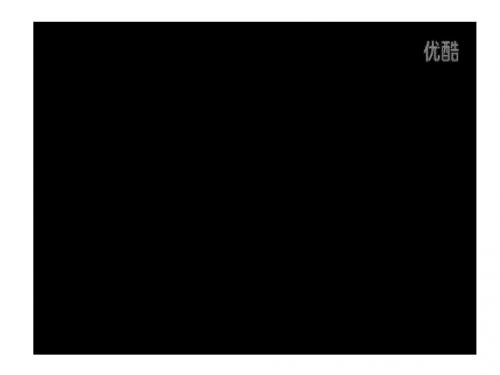
三、发展与应用
• 2008年报,该领域的代表公司Powercast表示,其最终研 制的微型高效接收电路,可以捕捉到从墙壁弹回的无线 电波能量,在随负载作出调整的同时保持稳定的直流电 压。只需一个安装在墙身插头的发送器,以及可以安装 在任何低电压产品的“蚊型”接收器,Powercast解决方 案就可以将无线电波转化成直流电,在约1米范围内为 不同电子装置的电池充电。
无线充电技术(Wireless charging technology;Wireless charge technology ), 源于无线电能传输技术,小功率无线充电常采
用电磁感应式,大功率无线充电常采用谐 振式由供电设备将能量传送至用电的装置,
该装置使用接收到的能量对电池充电,并同时 供其本身运作之用。由于充电器与用电装置之 间以磁场传送能量,两者之间不用电线连接, 因此充电器及用电的装置都可以做到无导电接 点外露。
电气工程师 毕业院校 格拉茨理工大学(实际未毕业) 主要成就 交流电系统、无线电系统、无线
电能传输、雷达、放大发射机 人物头衔 交流电之父、无线电之父
Qi标准是全球首个推动无线充电技术的标准化组织—— 无线充电联盟(WPC)推出的无线充电标准,其采用了目 前最为主流的电磁感应技术,具备兼容性以及通用性两 大特点。只要是拥有Qi标识的产品,都可以用Qi无线充 电器充电。而因为解决了通用性问题,在不远的将来手 机、相机、电脑等产品都可以用Qi无线充电器充电,为 无线充电的大规模应用提供了可能。
• 2010年九月一日,全球首个推动无线充电技术的标准 化组织——无线充电联盟在北京宣布将Qi无线充电国际 标准率先引入中国。
- 1、下载文档前请自行甄别文档内容的完整性,平台不提供额外的编辑、内容补充、找答案等附加服务。
- 2、"仅部分预览"的文档,不可在线预览部分如存在完整性等问题,可反馈申请退款(可完整预览的文档不适用该条件!)。
- 3、如文档侵犯您的权益,请联系客服反馈,我们会尽快为您处理(人工客服工作时间:9:00-18:30)。
自由能接收器
翻译:樊京
Email:elec_fans@ 初次接触自由能接收器的人可以把这看作一个太阳能电池板。
本质上,特斯拉的发明与此非常不同,但是,从传统技术的角度来讲,最接近的是光电管。
太阳能电池板和光电管最大的不同是,太阳能电池板有由晶体硅作基底,而光电管使用非晶硅。
传统的太阳能电池板是昂贵的,并且无论什么样的基底涂层,其生产工艺都很复杂。
但是,特斯拉的“太阳能电池”非常简单,它仅仅由一个有光泽的金属板,上面某种覆盖绝缘的透明物质,类似今天的塑料涂层。
图1 自由能接收器
将这个类似天线的平板竖立在空气中,越高越好,将它的一头连接电容,电容的另一头连接天线。
现在,来自太阳的能量就可以为电容充电了。
通过电容连接某种切换设备,这样它就可以间歇放电,你也就得到了电力输出。
特斯拉的专利告诉我们可以这样简单的获得能
量。
绝缘板的面积越大,你获得的能量越多。
但是,这种设备不仅仅是太阳能电池,因为它可以在晚上工作。
当然,依照现在的科学理论,这是不可能的。
因此,在今天这样的发明得不到专利。
很多发明家吃过这样的苦头。
特斯拉在当年就遇到了专利审查员的刁难,不难想象,今天的自由能发明者会遇到更大的困难。
在写这篇专利时,美国专利局的领导由里根委任,他原来是Philips石油公司的高级行政人员。
特斯拉的自由能接收器在1901年作为“一种辐射能利用装置”被授予专利。
专利提到“太阳,以及其它的辐射源,如宇宙射线”。
设备在夜间工作被解释为可以获取宇宙射线。
特斯拉还提到,“大地是带负电的巨大容器(a vast reservoir of negative electricity)”。
特斯拉着迷于辐射能量和自由能的可能性。
他称克鲁克斯的辐射计(一种展示辐射能量的装置,见图2。
)是“一个漂亮的发明”,他
图2 克鲁克斯计
认为这将能够直接利用自然能量。
依照特斯拉说法是“连接上自然之轮”。
特斯拉的自由能设备就如他专利中提到的一样,我们只能了解这
么多。
但是在他76岁生日的例行发布会上,特斯拉宣布了“宇宙射线马达”。
当别人问他是否比克拉克斯计更强大时,他说,“要强大数千倍”
它是如何工作的
在举起的平板(正)和地面(负)之间存在电势,能量在电容中存储,并且,经过一段“合适的时间间隔”,积累的能量将“在一次强大的放电中显示自己”,这样就可以工作。
这个电容,特斯拉说,应该是“具有相当大的存储静电的能力”,并且它的介质使用“最好质量的云母”。
因为它能够承受较高电势,而其它的电介质则容易被击穿。
特斯拉给出了切换设备的各种选择。
一种是旋转开关,类似于特斯拉的电路控制器。
图3
另一种是由两个极轻的薄膜导体悬浮在真空中。
这将传感电容器中能量的积累过程,一端接正,另一端接负。
在某种特定的电压情况
下,将被吸引,接触,从而短路电容。
图4
特斯拉还提到了一个由小的空气隙或弱电介质薄片组成的切换设备,这种设备在达到某种电压后被击穿。
以上就是所有可以在专利中得到的技术细节。
尽管我浏览了一些关于自由能的参考文献,我还是不知道任何能够证明它的实验。
Plauson的转换器
特斯拉的发明激起了很多在自由能领域工作的人们的梦想。
至少有一打记录在案。
让我们特别关注其中的一个。
1921年,Hermann Plauson,一个德国的实验师成功的获得了专利,包括在美国的专利,由于“转换大气的能量”的发明。
在学校里,每当介绍电力现象时总会引入“静电”,这就是Plauson 所称的“大气的”。
静电是电力的原始状态,由于对电容充电而产生。
在大自然中容易获得,例如雷电和极光。
如果你看到过运行中的静电发生器,你就不难想象人造静电的巨
大电势。
在Van de Graff静电发生器中,一个旋转的盘子或丝带就能产生类似特斯拉线圈的放电现象。
不幸的是,在学校的教育中,静电现象的主题只能被简单提及,很快就过去,而且再也不被提起。
此后电力来源仅限于在电池或电力插座。
它是如何工作的
图5 Plauson的自由能转换器
在Plauson的描述中,自由能转换器的左面是由盘子组成的静电发生器,凭借一个“梳状”物收集静电。
当静电收集盘旋转时,“梳子”收集电荷,其中一个收集正电荷,另一个收集负电荷。
这两个“电刷”轮流对各自的电容充电,知道电容的电压足够高,从而火花隙被击穿。
振荡放电被耦合到变压器的初级,这是高频、高压的电能。
熟悉的火花隙将电荷转换成动态的电能。
变压器将振荡的高压电变成实际应用的电压,用来电热灯泡、加热以及带动高频马达。
Plauson的专利的右半部分图是一个利用同样原理的设备,但是收集能量的是一个天线,就像特斯拉的接收器一样。
既然天线越高越
好,面积越大越好,Plauson主张大的金属氦球。
Plauson说,三倍的安全间隙,也就是工作间隙阻抗的三倍是绝对需要的,对于大量的电荷搜集而言。
穿过安全间隙的电容能够规则放电。
Plauson的发明说明特斯拉的自由能发电机也许利用的是静电。
1933年,特斯拉在他77岁的生日发布会上说,电力在任何地方都不受限制的存在。
“能够驱动世界上的所有机器而无须煤、汽油、天然气等”。
当一名记者问到特斯拉的原理是否会颠覆当前的电力系统,特斯拉说:“它已经完全颠覆了”。
